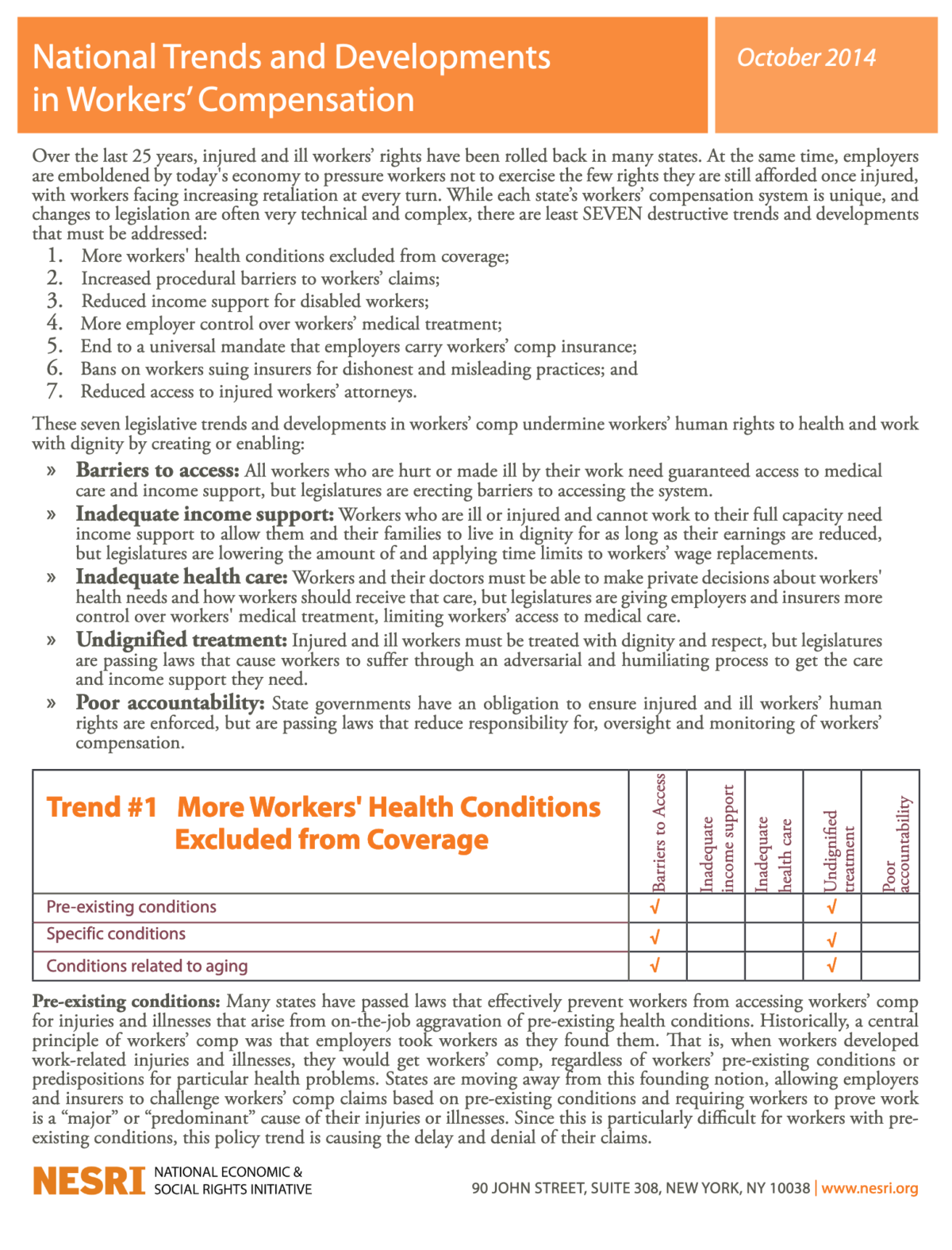Trends in Workers’ Comp Have Real Life Consequences

Exclusions, barriers, bans and hurdles describe many injured workers’ experiences with workers’ compensation,” says Celeste Monforton, DrPH, in an October 23rd blog posted to The Pump Handle, featuring a new NESRI policy brief on workers’ compensation.
Earlier in the month, NESRI released the workers’ comp brief, which identifies seven destructive trends and developments that cut across the 50 states’ distinct workers’ compensation systems. Monforton points out that these trends are anything but “new”, citing several important articles, including publications by NESRI’s Workers’ Comp Advisory Board members, Emily Spieler, JD, and Les Boden, PhD. Employers and insurance companies have been using their outsized political power for the past few decades to push legislation that stacks the deck against injured and ill workers at every step of the comp claims process.
Lifting up the story of one worker, Robert Hudson, who suffered from damage to his respiratory system due to toxic chemical exposures on the job, Monforton drives home the fact that these legislative trends cause real life harm for injured and ill workers forced into adversarial struggles to get the medical care and income support they need. Though Hudson’s doctor decided that his injuries were work-related, the employer’s workers’ comp insurer demanded that Hudson endure repeated, humiliating medical exams by doctors paid by the insurer with the intention of disproving Hudson’s doctor. This is not how workers’ comp is supposed to work. The unequal battles against employers and insurance firms that injured and ill workers go through are a far cry from the “no fault” model promised when workers’ comp systems were set up in the early 1900s. That is, workers’ comp should deliver access to care and wage replacements in a seamless and efficient manner, but it doesn’t and the real life consequences – the blaming, badgering, insults, stigmatization, and intimidation, let alone the growing number of exclusions and barriers – have reached the level of a moral and human crisis and demand correction.
Read Monforton’s full post on The Pump Handle here: http://scienceblogs.com/thepumphandle/2014/10/23/destructive-trends-in-workers-compensation/
Read our October policy brief on national trends and developments in workers’ compensation here: https://dignityandrights.org/resources/national-trends-and-developments-in-workers-compensation
